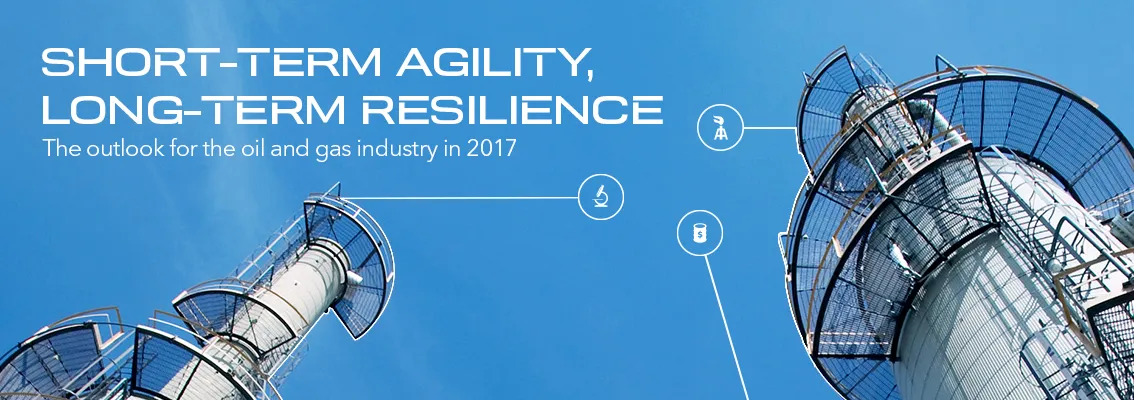Confidence in the outlook for Brazil’s oil and gas industry has more than tripled from 16% in 2016 to 50% in 2017, according to new research published by DNV GL, the technical advisor to the sector. Industry confidence for the year ahead is also significantly higher in Brazil than the global average (32%) as business-friendly reforms come into play across the country.
“This boost in confidence shows that Brazil’s senior oil and gas professionals are putting the recent crises that paralysed the sector behind them. The Brazilian oil and gas sector’s fundamentals are very strong, however there is a need to improve the business environment to bring the industry back to its growth path, and this starts in 2017,” says Alex Imperial, Managing Director, South America, DNV GL – Oil & Gas.
“After two very tough years, Brazil’s sector leaders are now looking towards a positive future, resulting from meaningful legislation reforms that will increase Brazil’s long-term predictability and competitiveness, crucial conditions to attract foreign investment and revitalize the industry. Petrobras’ new governance and strategy also send very positive signals for the industry’s outlook. These will certainly pave the way for a vibrant and diverse industry in the years to come.”
The positive sentiment for 2017 is not reflected in all aspects of business, however. Just a quarter (26%) of senior industry professionals based in Brazil expect to hit their own revenue and profit targets this year, compared to global figures (38% and 34% respectively). This comes as companies adjust to a new reality where oil prices remain lower for longer.
Despite the concrete achievements so far and signals of upcoming reforms, the local economy, geopolitical instability and a lack of policy/government support are considered key barriers to growth in Brazil, according to the research.
Short-term agility, long-term resilience is DNV GL’s seventh annual benchmark study on the outlook for the oil and gas industry, providing a snapshot of industry confidence, priorities and concerns for the year ahead. It draws on a survey of 723 senior sector players globally1.
In a period of drawn-out recovery across the oil and gas sector, DNV GL’s research reveals signs of short-term agility with 58% of Brazilian respondents expecting their organizations to favour investment in more agile projects (52% globally). 58% of respondents in Brazil expect to focus on increasing the efficiency of assets in operation this year, while 46% expect to focus on increasing asset lifespan.
There is also evidence of deep, strategic changes for sustainable growth with organizational restructuring cited as the main tactic for reducing costs this year (48%) and 40% of respondents are looking for new merger and acquisition (M&A) opportunities in the gas sector compared to 27% globally, indicating the potential of a sector in transformation.
Cost-cutting remains firmly on the table this year with 69% of Brazil’s oil and gas organizations expecting increasing cost control measures to be put into place in 2017, compared to 51% globally. 78% believe most cost efficiency measures are permanent and will remain beyond the downturn. Organization restructuring, OPEX spending cuts and supply chain optimization appear among the top three measures for reining in spending for the year ahead among Brazilian respondents.
“Last year, we saw intense and painful short-term cost-cutting measures in the industry,” says Elisabeth Tørstad, CEO, DNV GL – Oil & Gas. ”Though few expect a recovery in 2017, and cost-cutting measures are still on the table this year, confidence in the oil and gas sector growth has stabilized for now and opportunities are being created. Improved focus on collaboration, standardization and digitalization will enable the industry to transform to meet the demands of the new era and become profitable in volatile markets.”
Other key findings include:
- Digitalization and advanced materials represent the emerging technologies with the biggest potential for implementation and significant investment in 2017 (16% each), followed by cyber security and pipeline technologies (10%).
- Respondents will prioritize conducting R&D for the following emerging technologies in 2017: subsea technologies (16%), followed by cyber security (12%) and pipeline technologies (10%).
- 16% of respondents in Brazil expect CAPEX to increase in 2017 (12% globally).
- 22% expect headcount to increase (12% globally).
- Maintained or increased CAPEX is in 2017 expected by 44% of respondents (39% globally).
- 76% believe gas will become an increasingly important component of the global energy mix over the next ten years.
- 70% are seeking to achieve greater standardization of tools and processes (66% globally).
- Over a third (34%) believe that the worst of the industry downturn is already over.
- 64% of respondents believe the oil and/or gas industry needs to adopt cheaper, more effective pipeline materials (57% globally).
1. The outlook for the oil and gas industry in 2017 is an industry benchmark study from DNV GL, the leading technical advisor to the industry. Now in its seventh year, the programme builds on the findings of six prior annual outlook reports, first launched in early 2011. During October and November 2016, we surveyed 723 senior professionals and executives across the global oil and gas industry, along with 14 in-depth interviews with a range of experts, business leaders and analysts. Two–thirds (66%) are employed by suppliers and service companies across the industry, while 26% of respondents work for oil and gas operators. The remaining respondents come from regulators and trade associations. The companies surveyed vary in size: 41% had annual revenue of USD500m or less, while 18% had annual revenue in excess of USD5bn. Respondents were drawn from right across the oil and gas value chain, including publicly-listed companies and privately-held firms. They also represent a range of functions within the industry, from board-level executives to senior engineers.
